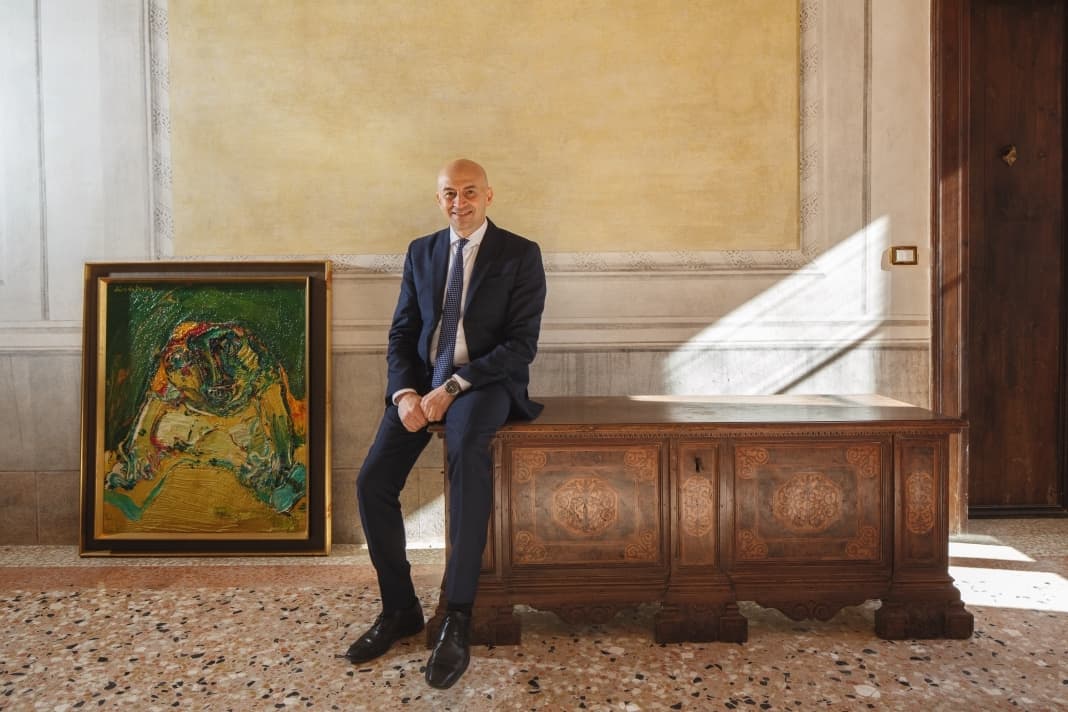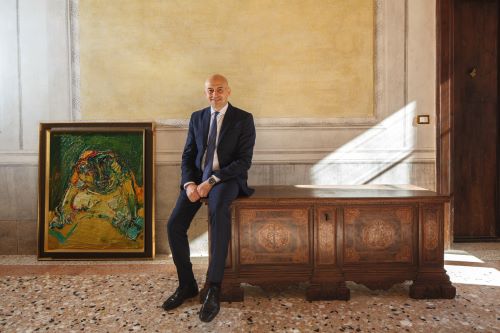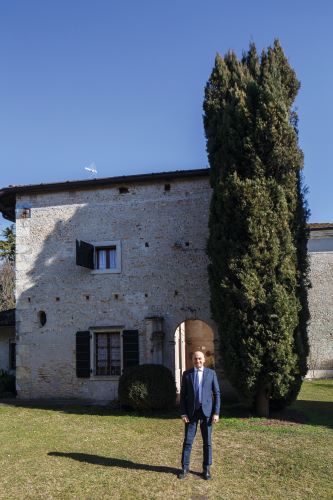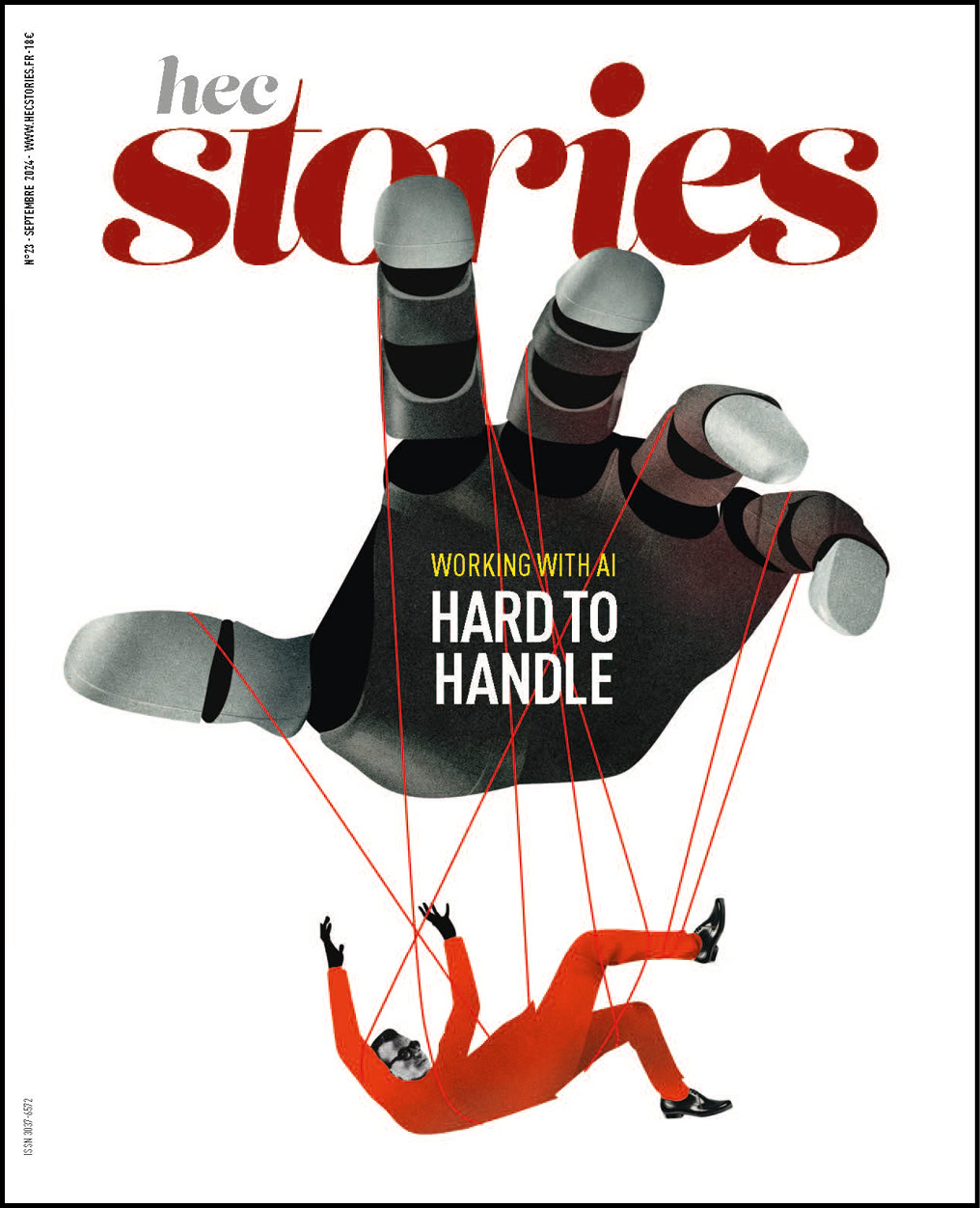Massimo Tammaro (T.15), Esthete of the Air

Massimo Tammaro (T.15), former test pilot and Ferrari F1 driver, has chalked up feats of aerial gymnastics, TED conferences and a whole panoply of other victories, including against Gaddafi. But that’s not all.
I was remembering the first few events in Massimo’s life story when I arrived at the entrance of the Villa Bartolini-Tammaro, 70 km east of Venice. The automatic entry door didn’t work. “Hello! I really need to change the batteries in that thing,” were the first words of our interview. Contrary to what his CV and web site might suggest, Massimo isn’t intimidating. Medium height, ill at ease in front of the camera although not timid, immediately welcoming, and practically vibrating with energy. In his emails, literally every sentence ends with a smiley.
A mini-Guggenheim
At first glance, his palace isn’t overwhelming, either. It’s far from a glittery showplace filled with mascarons and marble columns: with its flaking white façade, it looks more like a country parson’s home. Inside, no heating, little furniture, lots of tarps and construction gear. “It’s not very comfortable, but I’m not fixing it up for me to live here,” he explains. So if it’s not designed to impress or for a place to live, what is this long-term, very costly project for? He says, “Everyone thinks that the only things that interest me are fast cars and thrills, but my real passion is art and heritage.”

He willingly shows off a few paintings in his collection, stacked up in one of the rooms. I almost trip over a kind of ready-made by Daniel Spoerri, a tray of dishes under glass with the remains of breakfast slowly disintegrating. A melancholy work that doesn’t fit at all with the dynamism of its owner.
“This is why I bought this place,” he explains proudly, “to display a collection I started when I was 25 years old. Neither these paintings nor this house belong only to me; they are part of the heritage of Italy and the world, and my goal is to make them available to everyone once this renovation project is finished.” A Tammaro museum, in other words? “That’s right, sort of a tiny version of the Guggenheim.”
This love of patrimony is something he inherited from his father, who took the whole family on cultural excursions during every holiday. On one trip, gothic cathedrals; on another, Parisian museums. He says, “Thanks to him, I’ve been to the Louvre at least 15 times!”
No matter what anyone might think, for Massimo Tammaro, the world is much more than a huge playground to be crossed at top speed. He explains, “My father set definite limits early on. He expressed this through four key virtues: work, honesty, loyalty and modesty. Ever since I was 17 years old, I have rigorously followed his guidelines, and I owe him every success I’ve had.”
At 17, in fact, Massimo’s life looked a bit sketchy. Not at all studious, he was nevertheless very popular and was chosen class president of his secondary school, a position he made the most of by organizing student strikes and getting into all kinds of trouble. When it came time for him to choose a career, he wasn’t motivated by a long-standing passion, or even by the film Top Gun, which was released that year, but rather by an aesthetic sense. He remembers, “I was sitting at the back of the class with my best friend and we were flipping through a magazine instead of listening to the teacher. All of a sudden, we spotted a photo of a glittering F16. We looked at it and both of us said, ‘Yeah, that’s really cool…’.”
He asked his father for his approval, and his father said, “I’m proud of your choice, but if you don’t change, you will surely fail.” Young Massimo was shaken, and took the message to heart. He worked his head off and managed to get some of the highest marks on the entrance exam for the air-force academy. “Ever since then, I have never done anything by half. When I start a new job, for example, I always give it my all.”

After three years at the academy in Naples, he continued his training in the US, in Wichita Falls (Texas) and Columbus (Missouri). He says, “I was 22 years old, I was a fighter pilot, independent and on my own in the United States. As a beginning in life, it was fantastic.”
After a few years in the army, which included piloting a bomber during the war in Bosnia, Massimo was recruited by Frecce Tricolori (“The Tricolor Arrows”), the aerobatics team of the Italian air force and a source of great national pride. He points out, “The Frecce is the only aerobatic formation in the world with 10 planes. It has around 150 fan clubs in Italy and abroad.” He was a wingman, leader, and finally the commander of the formation. He acquired his first management skills through this role, and also earned an international reputation.
Massimo, 1; Gaddafi, 0
In 2009, Italy’s Prime Minister Silvio Berlusconi sent the Frecce to Libya as part of a business venture. Massimo remembers, “It was a really bad idea: the local population didn’t want to witness a display of force by a former colonial power, and we pilots didn’t want to perform for a dictator like Gaddafi.”
Once there, Massimo also had to deal with an unexpected demand by the flamboyant despot, who refused to allow the team to use tricolor smoke trails honoring the Italian flag, and insisted that the display be done only with green smoke, to honor his own flag. It was up to Massimo, as commander of the team, to manage this diplomatic-chromatic crisis, and to negotiate with Gaddafi’s own son. “They used every kind of intimidation tactic against us, waking me up at 3 AM and aggressively arguing for their position. It was really stressful,” he says.
After a tense week and the intervention of the Ministry of Defense, the Frecce prevailed and flew with their tricolor smoke. “When I got back home, I was hailed as a hero for Italy, and I became a bit famous,” Massimo says. This fame drew the attention of Ferrari, who made contact with him once his contract with the Frecce ended.
An amazing coincidence; he explains, “My work with the formation had been incredibly exciting, the greatest experience in my life. When my last year began, I worried about finding another job that would give me the same stimulation. So, I bought a little Moleskin notebook to write down my ideas. And on the first line of the first page, I wrote ‘Ferrari’.”
The prancing horse
At the beginning, Ferrari’s executives didn’t have a very clear idea of what Massimo could do for their company, and he didn’t have a very clear idea of what he could offer. He says, “I had a lot of management experience, but I didn’t know anything about the company. In fact, that’s why I decided to attend HEC, through the Trium training program.” He eventually became part of the Formula 1 stable, sharing his Frecce expertise in radio communications and in managing a team with big egos…. He explains, “It made sense, because both organizations worked in more or less the same way, like a circus: We went somewhere, we set up our tents, we put on a show, and we packed everything up again.”
After seven years with the Scuderia, however, the job had become too routine for someone driven by a need to evolve. He says, “I don’t like to do the same thing over and over. When I go to work, I take a new route every day and even park my car in a new place. But the time came when I had to repeat myself, and I couldn’t stand that.”
These days, Massimo carefully preserves his freedom. Consultant, coach, mentor, speaker, he samples various roles and refuses any long-term project that might tie him to a large organization or trap him in a comfort zone.
He plans to use this freedom for the benefit of his beloved villa. He says, “I let people host cultural events here at no charge. I also let someone hold a summer wedding here, a special wedding in which none of the guests knew what they had been invited for and they all showed up wearing shorts and sneakers. A surprising, spontaneous occasion in a place filled with history: that’s exactly my kind of thing!” No wonder: he was the groom.
Published by Arthur Haimovici

